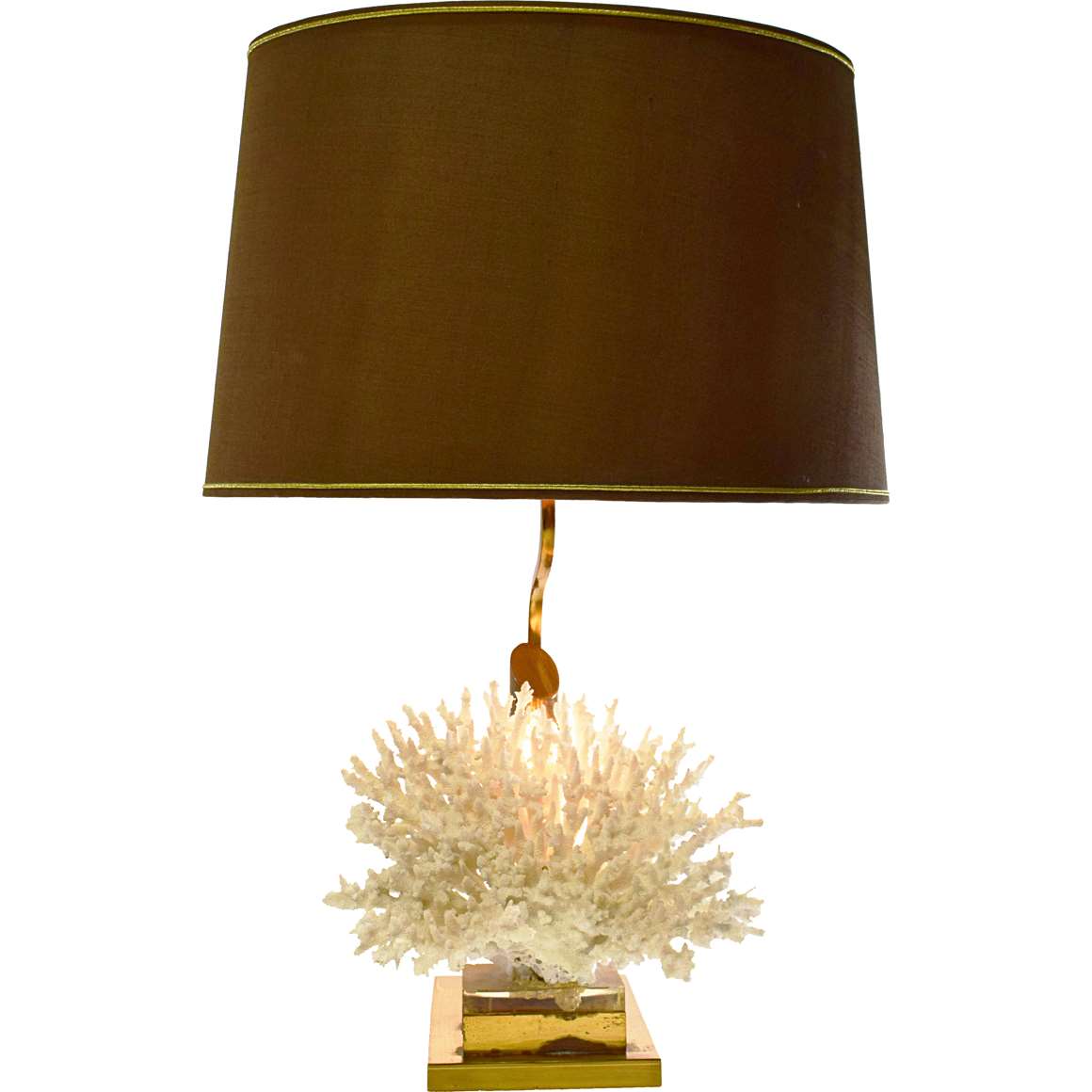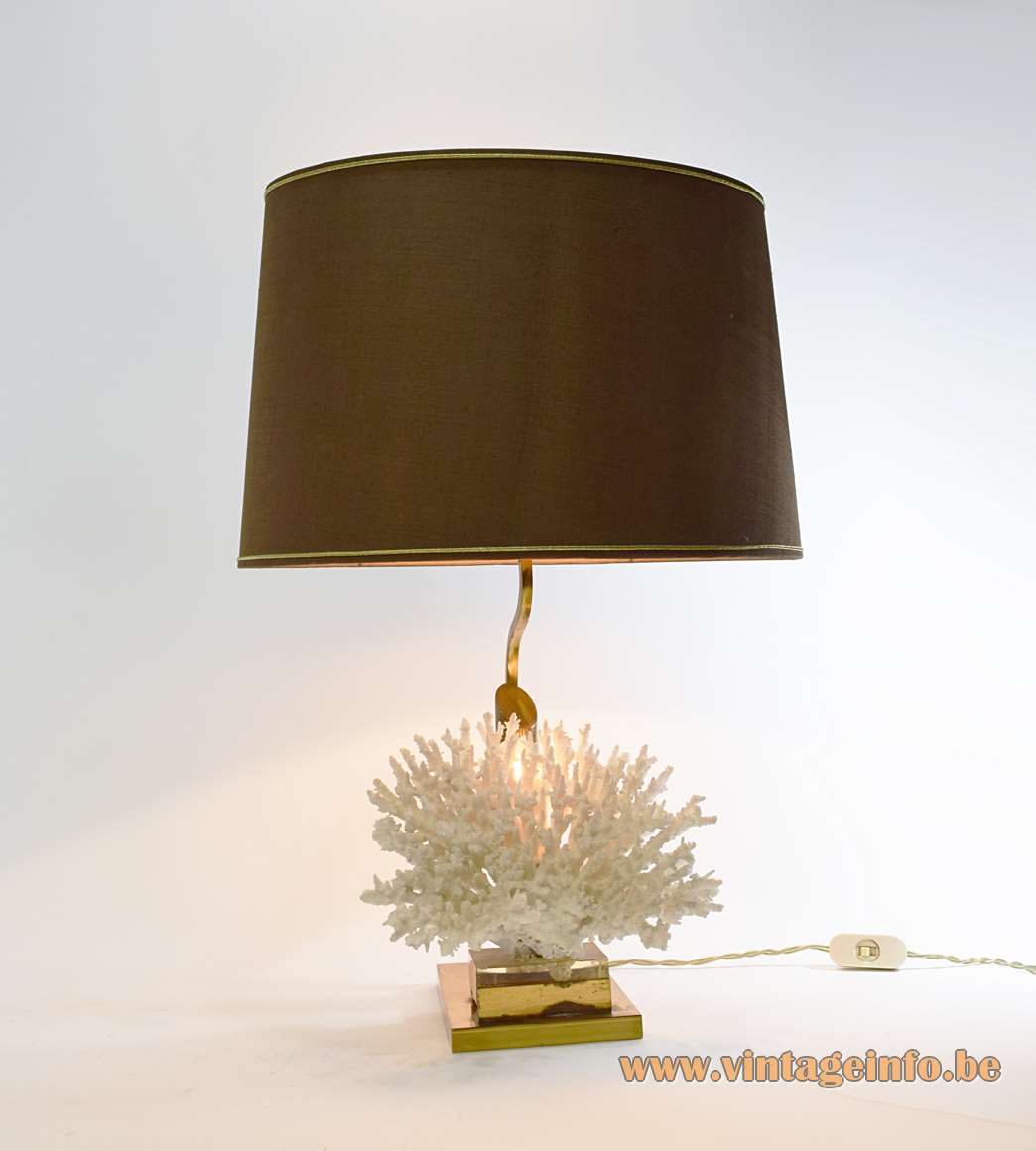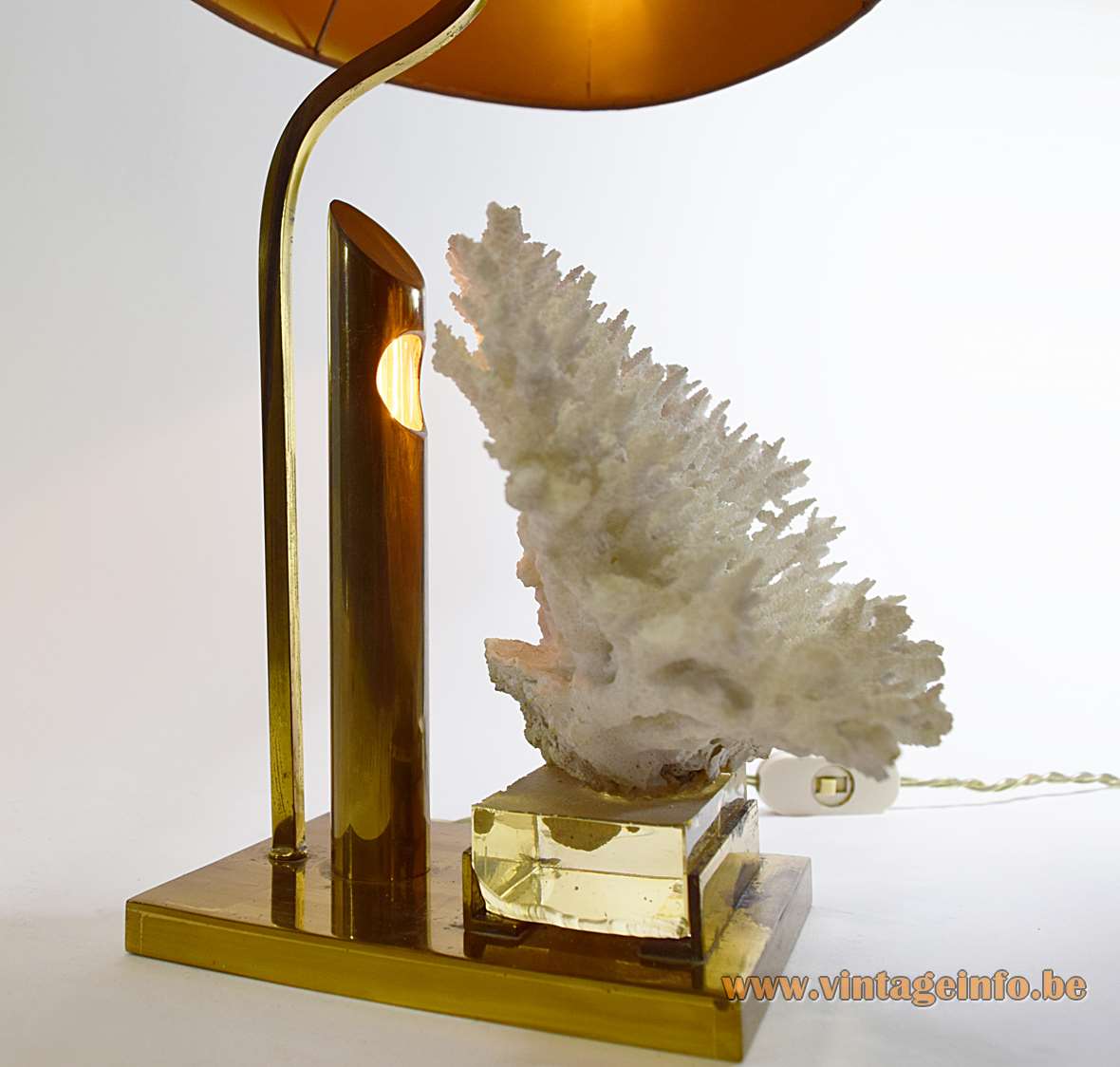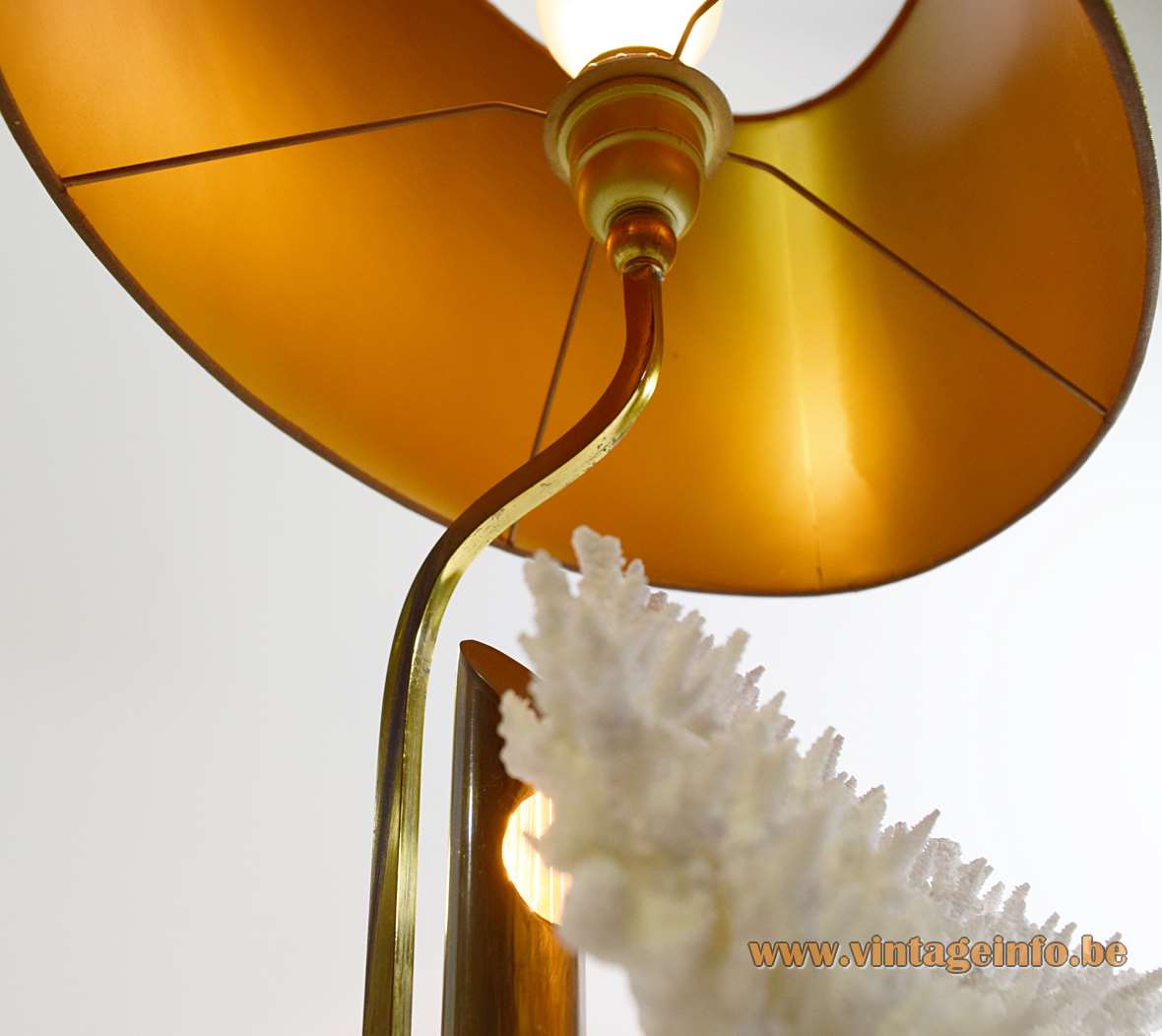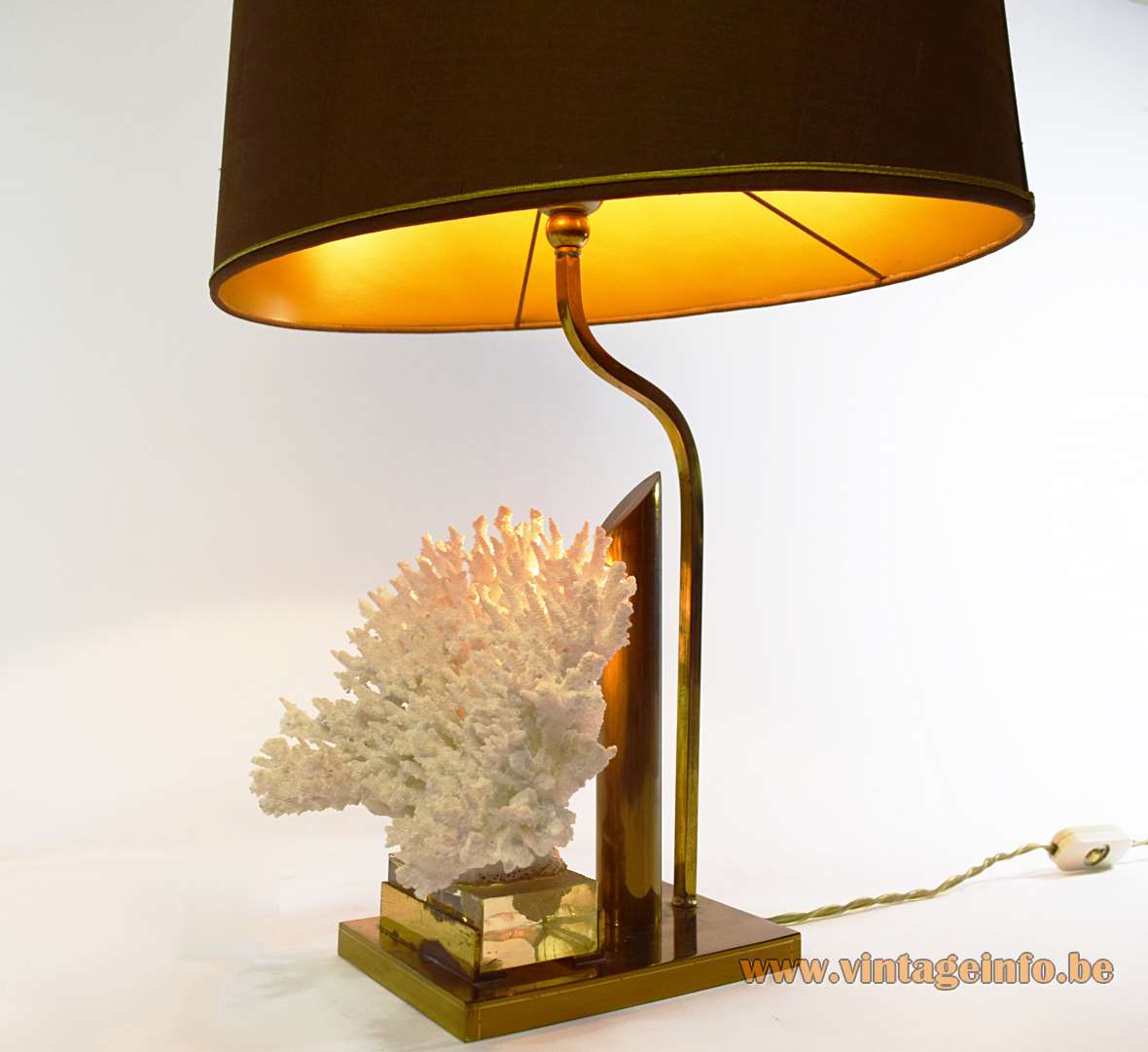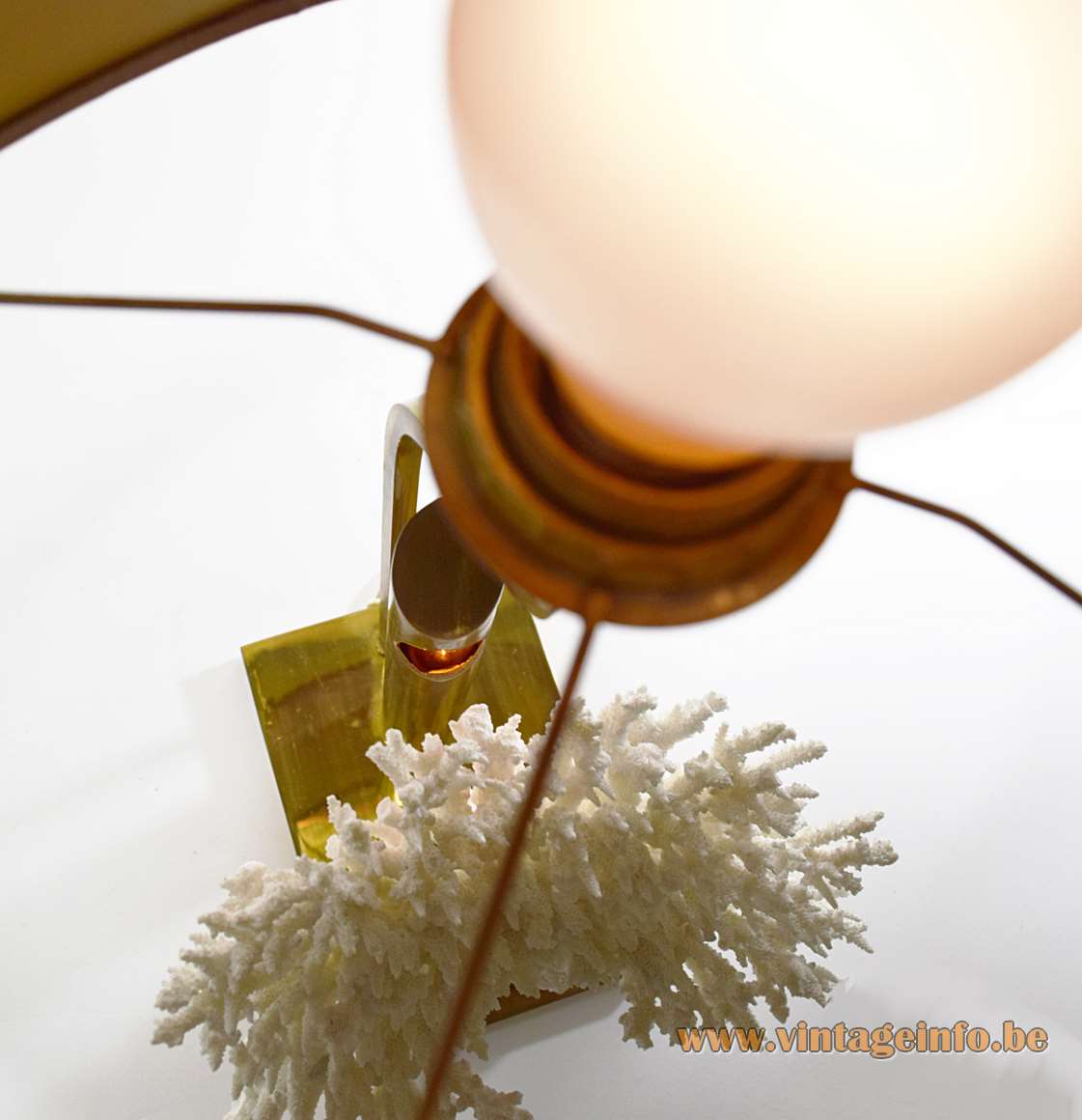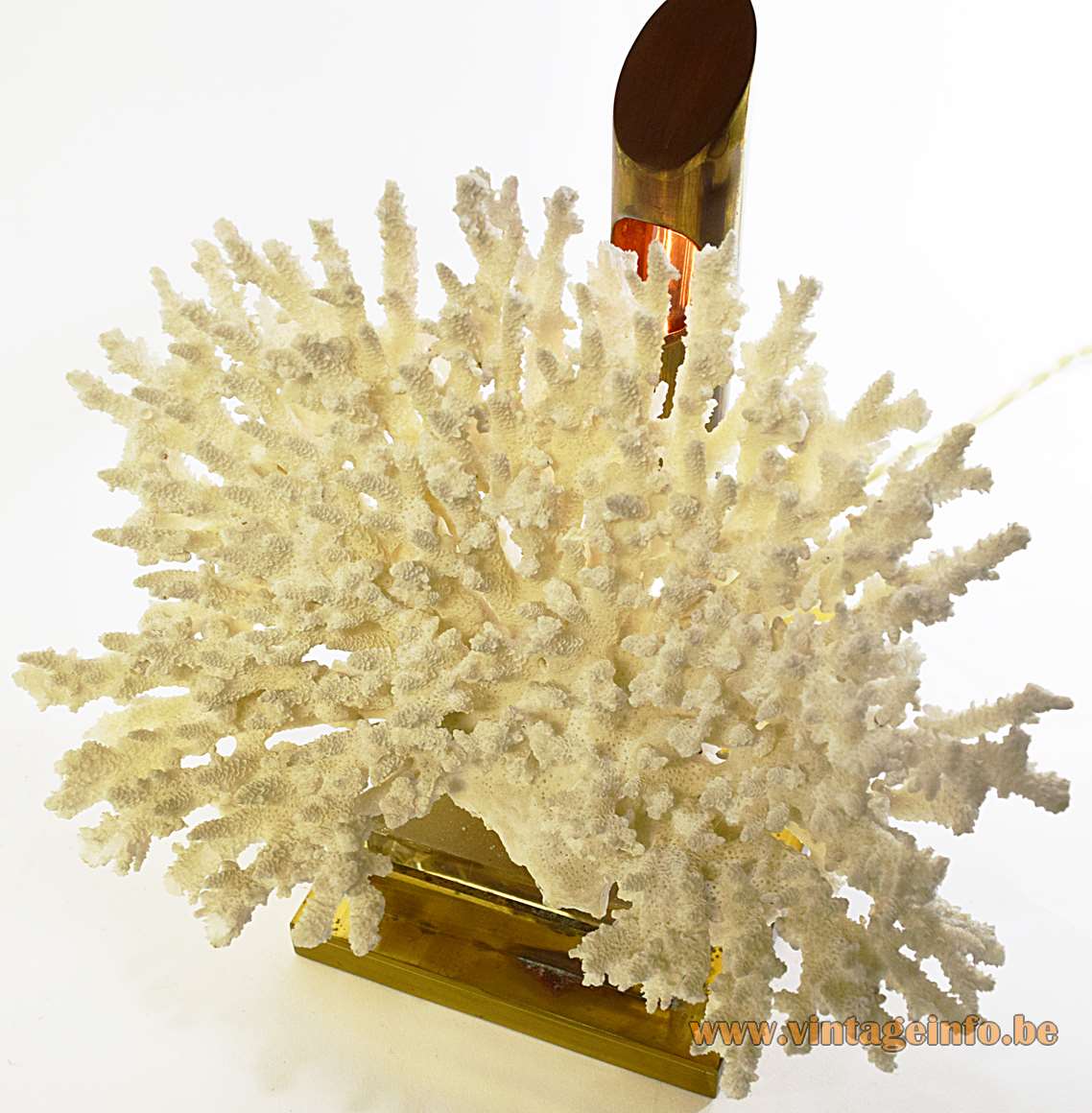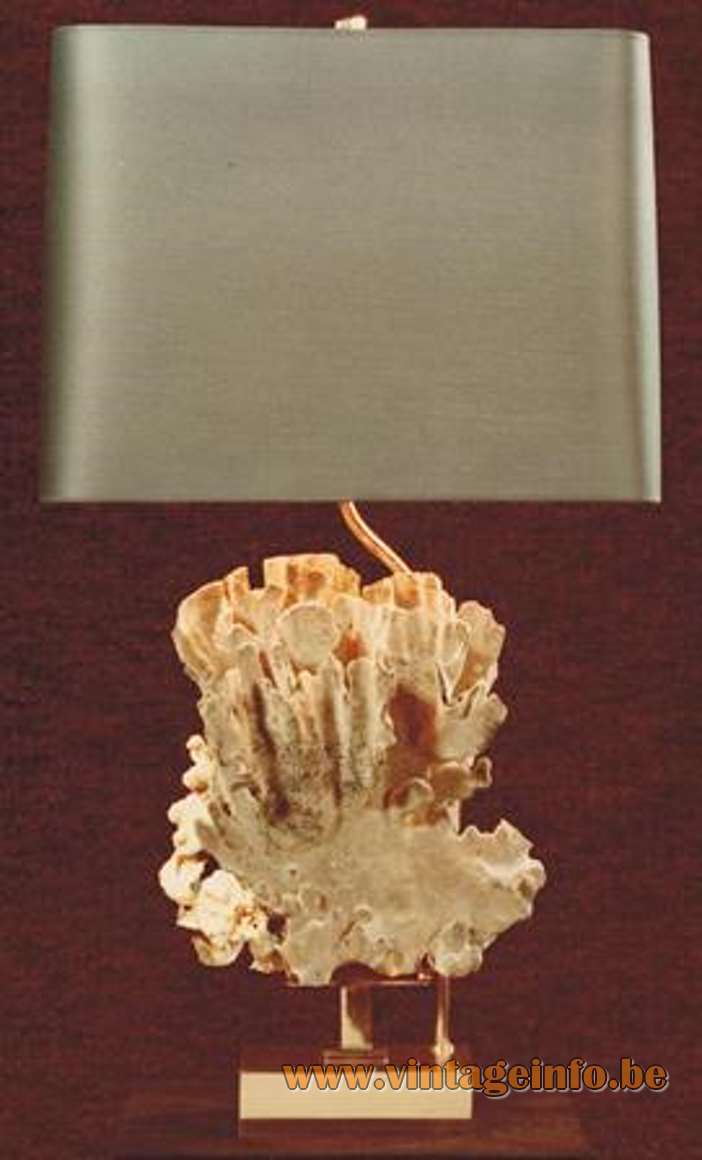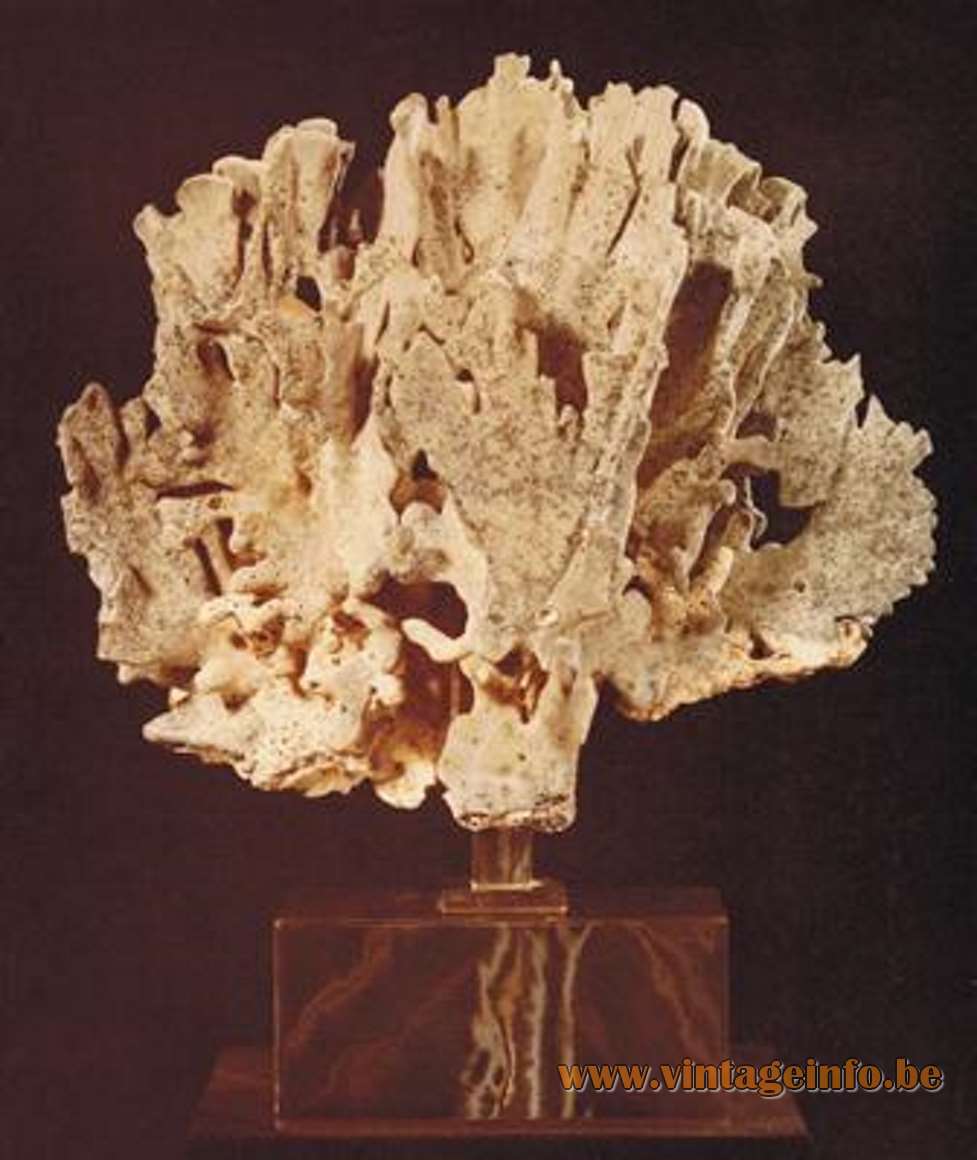Links (external links open in a new window)
Pocillopora damicornis – cauliflower coral – Wikipedia
Vintageinfo
Table lamp with the same base, different coral
Another cauliflower coral table lamp (pocillopora verrucosa)
1970s Cauliflower Coral Table Lamp
Materials: Brass base & parts. Polyester is used as a base for the lace or cauliflower coral (pocillopora damicornis). Curved square brass rod. 2 Bakelite sockets. An E27 socket in the brown oval conical fabric lampshade. An E14 socket behind the coral in a brass tube.
Height: 55 cm / 21.65”
Width: 38 cm / 14.96”
Base: 16,5 x 11,6 cm / 6.49 x 4.56”
Coral Width: 23 cm / 9.05”
Electricity: 1bulbE14 and 1 bulb E27, both 60 watt maximum, 110/220 volt.
Any type of light bulb can be used, not a specific one preferred, but a clear bulb always gives the most beautiful effect on corals.
Period: 1970s – Mid-Century Modern.
Designers that worked with corals, fossils and minerals: Willy Daro, Jacques Duval Brasseur, Henri Fernandez, Maison Honoré (Richard Faure & Isabelle Faure), Lova Creation, Paul Moerenhout, Pierre Faveere, Mário J. Pires, Violette, Romeo Paris, Stan Usel, Isabelle Masson, Georges Mathias, and many others.
Manufacturer: To be appraised.
Other versions: These 1970s cauliflower coral table lamp exists in many different sizes, colours, other minerals, corals, shells and so on. All with this brass base with polyester.
Willy Daro
These lamps are generally attributed to the famous Belgium artist Willy Daro, who was the owner and creator of Les Nouveaux Ateliers Willy Daro SPRL, in Brussels, Belgium.
In the beginning of the 1970s almost every lamp-company produced lamps in this style. Often made in Italy, France and Belgium. Maybe this lamp is made by Massive.
Most likely this lamp is not from his factory, though it was bought in Belgium. The lamps made by Wily Daro are made in a much higher quality.
Below are 100% genuine Willy Daro lamps, the pictures were taken from his sons website a couple of years ago. The website no longer exists. The company itself ended business in 1987.
These lamps became popular because at that time the collecting of minerals, gems, fossils, shells and corals boomed. In almost each city appeared a store that sold minerals, fossils and corals, and also due to Willy Daro who made these lights famous.
Coral lamps made by Willy Daro
